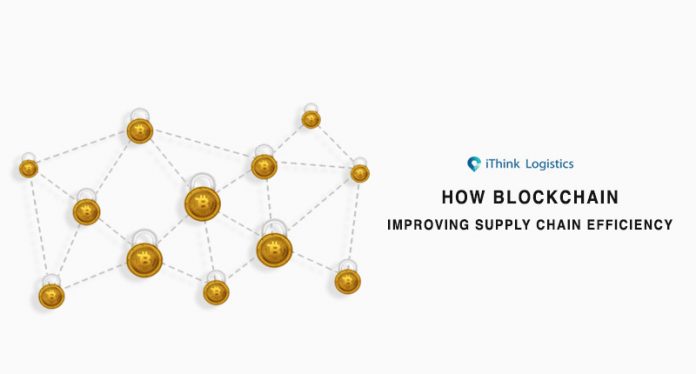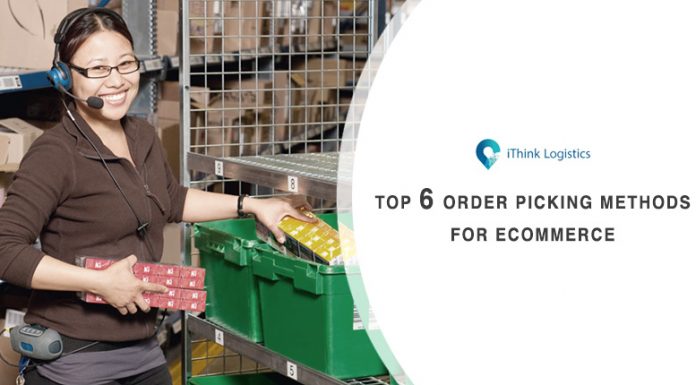Introduction to Blockchain
Blockchain technology or the Distributed Ledger Technology (DLT) has been the most impactful and disruptive innovations of recent times. The reason behind its popularity is the feature of guarding data once it is entered into the blockchain. The technology is comprised of three essential features—the data, the hash, and the hash on the previous block—that make up the most secure forms of data and cryptocurrency transfer. Not only that, find out how is blockchain improving supply chain efficiency.
The information carried by the blockchain can be cryptocurrencies, data, and several other packages. The type of blockchain is determined by the characteristics of data stored in it. Blockchain improving supply chain efficiency. The hash is a unique code that consists of alphabetical characters, which generate an identification of the block that is contributing to blockchain improving supply chain efficiency. The data stored in a single block, when modified, will generate a new hash for the same block. The hash of the previous block is defined as a sequence formed from hash generated for each block, with every addition or modification of the blocks. Proof of work is a supplement mechanism that displays the process of creation of new blocks; it is also called a Hash rate. The hash rate in the bitcoin chain varies around 12 minutes per new block.
After the formation of a new block, verification is carried out by the node to crosscheck the uniqueness of hash. For every new block, a node is added, forming a chain of its own, and these nodes formulate a consensual algorithm that harmoniously creates interlinking of unique hash by rejecting the unmatched hash in the network. The blockchain stores simple programs or cryptocurrency or data that are called smart programs. These smart programs are optimized for application in records handling, collection of taxes, and e-notary.
Integral Applications of Blockchains and Global Supply Chains
Globalization has unlocked the potential to share goods around the world. Even though it encourages increased commercialization, artificial intelligence in logistics has created complexities in the supply chain, causing several mishaps as a result. The only technology that has the penetration level high enough to disrupt the supply chain and formulate an efficient process is blockchain. It will alter the future of supply chains by guaranteeing better communication, higher system recovery, fewer route disputes, and substantial profits in operational efficiency. The three most integral applications of blockchain in the global supply chain are:

The provenance of product traceability
The authenticity of the product is the feature that proves the quality of consumer goods. The process of name-tagging the product with a unique code that can only be modified by authorized personnel is the answer to the wails of the consumers. The geo-tagging and time-stamping of goods can easily be traced back to its origin, increasing product safety, and customer confidence while reducing fraud and making as detailed forecasting as possible. Using blockchain technology, numerous players in the industry are tracing goods, from luxury clothing to baby food, to its origin.
Optimizing the efficiency of operation and performance
When products are transported from their origin to the destination via the supply chain, they pass through hundreds of stops. The lack of end-to-end integration and the extensive use of manual (by-the-book) processes have allowed access to the information within the supply chain. This accessibility to workers involved, from the layman to the controller, can be misused easily. At present, several solutions, one of which being the “bill of lading” are in use, It requires the people involved to sign the documentation physically. Blockchain technology can curb the physical intervention and replace it with an email-like interface interlocked with cryptographic signatures that can be seamlessly templated for use among multiple parties. This feature not only keeps the good secure but also helps identify where exactly the chain is broken.
Anti-corruption and humanitarian purposes
Several fraudulent players who have acted unethically during any transactions for humanitarian purposes can be located with the application of blockchain. A higher sense of transparency and accountability is entrusted by the sequential process of blockchain, avoiding any discrepancies that are related to the failure to reach amongst financial aid. The method of subsequent interactions, when decentralized, will record each interaction. The record allows the organization to register that the full amount did not reach its intended recipient, and the follow-up of the audit trail to the fraudulent actor is more effortless.
The blockchain technologies are not only providing a secure means of transaction and transportation of goods but, it also helps create a just and unbiased tool for the supply chain participants. The goal set by the innovators of blockchain is to sail supply chains towards the waters of inclusiveness, inter-operational stability, and integrity.
Applications of Blockchain in Supply Chain
Some applications of the technology that are already in use or can be implemented today using the existing technological resources available.
Payments for Automotive Suppliers
The transfer of funds anywhere in the world is easier with blockchain as the need for traditional banking is nullified. It fulfills the transactions directly between the payer and payee canceling out the middleman. It is also safe and rapid when compared to days for automated clearing house payments, for example.
The Australian vehicle manufacturer Tomcar utilizes Bitcoin to pay its suppliers. Currently, three partners from Israel and Taiwan are accepting payments from Tomcar using Bitcoin.
The agreements used by Tomcar are the same as the standard terms with cost savings s an added advantage. While Bitcoin is international by nature, several national governments have recognized it as a proper method for companies to invest.
RFID-based Contract Bids and Execution
RFID tags are used in the supply chain to store product information. IT systems can read and process the tags automatically. Therefore, the use of these for smart contracts in logistics can be made possible.
RFID tags on cartons or pallets store all the product information, including delivery location and date. Logistics partners detect these tags to read product information and bid for a delivery contract. The partner offering the most optimal price and service wins the bid for the business. A smart contract is then generated to track the status and final delivery performance.
Cold Chain Monitoring
Frozen foods and pharmaceutical products need specialized storage conditions. Moreover, enterprises recognize the value of sharing warehouses and distribution centers instead of owning the space. Sensors are installed on sensitive products, which record temperature, humidity, vibration, and other environmental conditions.
The sensor readings are stored on a blockchain, making it permanent and tamper-proof. If a storage condition deviates from agreed parameters, each participant in the blockchain is notified. A smart contract will trigger an immediate response to rectify the situation.
Challenges to Overcome for successful use of blockchain
As blockchain is still an emerging technology, it contributes to a substantial share of issues that need attention. Enterprises interested in harnessing the power of blockchain in their supply chain need to resolve these issues and be prepared some of the following challenges:

Blockchain Ecosystem: A work in progress
The first model of the telephone was rendered useless until the second one arrived. The situation right now is similar to the adoption of blockchain. Companies that want to conduct business in blockchain with specific partners force the other end to employ the technology.
For example, Tomcar is currently executing bitcoin payment only for two percent of the parts it purchases. However, niche uses of blockchain are rising, and It may only be a matter of time until businesses join the revolution for widespread acceptance of blockchain.
Currency Volatility
The use of bitcoin is the easiest way to initiate blockchain. But the main problem lies in the exchange rates of Bitcoin to other currencies, which are regularly fluctuating. Payment terms must be clearly defined and include the exchange rate discrepancies for the smooth and successful use of Bitcoin.
Bitcoin and many other cryptocurrencies (Ether, for example) are also volatile by nature from another sense. If the digital key (passcode) to the cryptocurrency reserve is lost, there is no way to recover it.
Technology and Information dissemination
Blockchain programming requires fairly good software skills and various applications. By understanding these programs, respective businesses and its economy can be understood. A necessity to train staff or hire new people with these skills will arise if outsourcing the blockchain development to a third-party service provider is not an option. The best choice for the enterprise depends on the current situation and future aspirations.
Conclusion
Blockchain has the capacity to transform supply chains, industries, and ecosystems. On the flip side, even large financial organizations like banks, which would be disrupted due to blockchain, have appeared to be implementing the new technology. These players have identified opportunities to exploit and seized it to streamline all their operations.
The in-depth transformation of supply chains is not expected to happen overnight. Nevertheless, supply chains have already adopted blockchain in various areas of their supply chain operations. Smart contracts can potentially help in the elimination of expensive delays and curb the waste produced by manual handling of paperwork. From here on, newer pathways have opened up for the faster, more intelligent, and much secure process throughout the entire supply chain.









